Great Design Plant: Baja Fairy Duster, a Scarlet Stunner
http://decor-ideas.org 04/22/2014 02:24 Decor Ideas
Whether you call the uniquely shaped flowers of this shrub fairy dusters or puff balls, they are sure to add beauty to a Southwestern landscape. Baja fairy duster’s dark green, lacy foliage provides a great backdrop to the vibrant red flowers, which hummingbirds find irresistible. This tough shrub will thrive in areas that receive hot, reflected sun and intermittent watering, and minimal maintenance is required, making this a must-have for those who live in zones 9 and above.
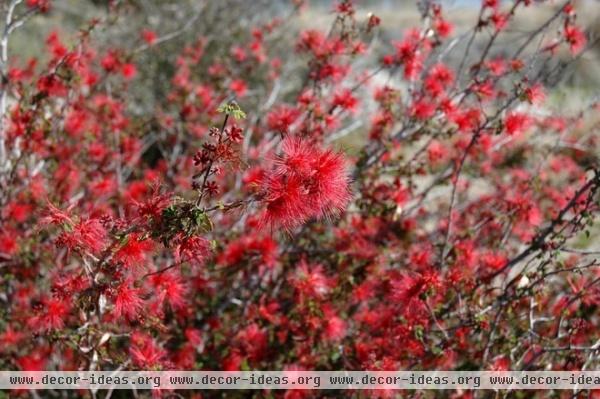
Botanical name: Calliandra californica
Common name: Baja fairy duster
Origin: Native to Mexico’s Baja peninsula
Where it will grow: Hardy to 20 degrees Fahrenheit (USDA zone 9; find your zone)
Water requirement: Low
Light requirement: Full, reflected sun to light shade
Mature size: 5 to 6 feet tall and wide
Benefits and tolerances: Drought tolerant once established, but does best when watered once a week in summer, every two weeks in spring and fall, and once a month in winter; attracts hummingbirds.
Seasonal interest: Vibrant red puffball flowers appear throughout the year.
When to plant: Spring and fall; can be grown from seed or transplants
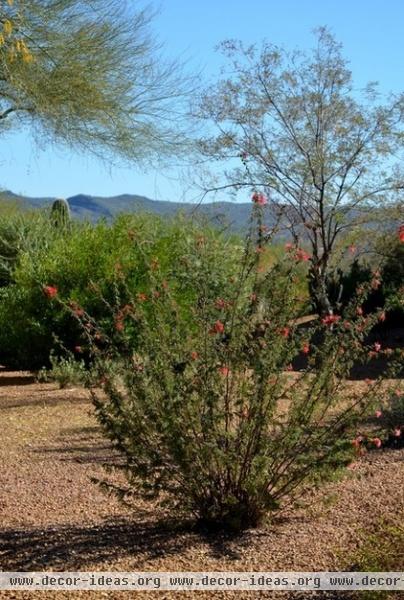
Distinguishing traits. Like many other arid-adapted plants throughout the Southwest, Baja fairy duster thrives in seemingly inhospitable locations.
The dark green lacy foliage is made up of tiny leaves clustered tightly together along the stems of this shrub. It’s evergreen in mild winters; frost damage can occur when temperatures dip into the 20s. However, recovery is relatively quick once the warm temperatures of spring arrive.
This Baja native has an attractive, natural vase-shape growth habit, and pruning needs are minimal.
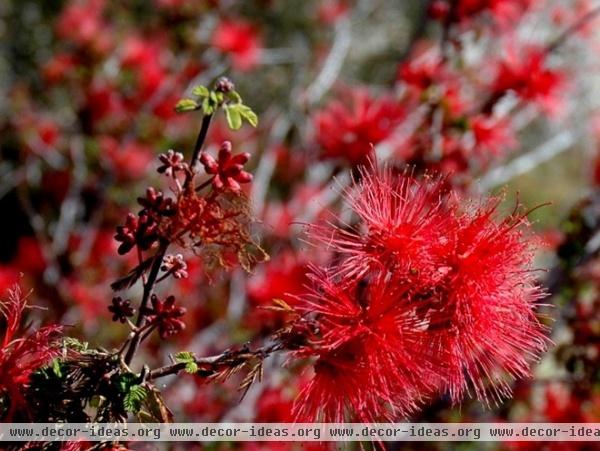
The most attractive feature is its flowers, which are made up of multiple stamens — the petals are almost invisible. Small seedpods appear after the flowers fade that will drop to the ground.
While flowering can occur throughout the year in areas without frost, the heaviest bloom happens during the spring months. Baja fairy duster grows best in full sun; it will grow in filtered shade, but flowering will be diminished.
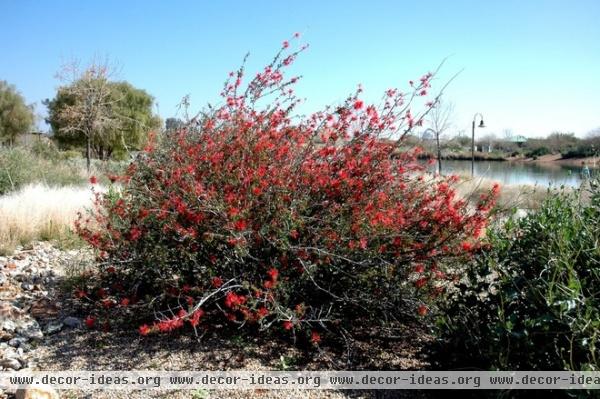
As a member of the pea family, Baja fairy duster fertilizes itself, so no fertilizer or soil amendments are needed for this relatively fuss-free shrub.
Though drought-tolerant once established, like all arid-adapted shrubs, Baja fairy duster looks best when given supplemental irrigation — weekly in summer, decreasing to monthly during the winter.
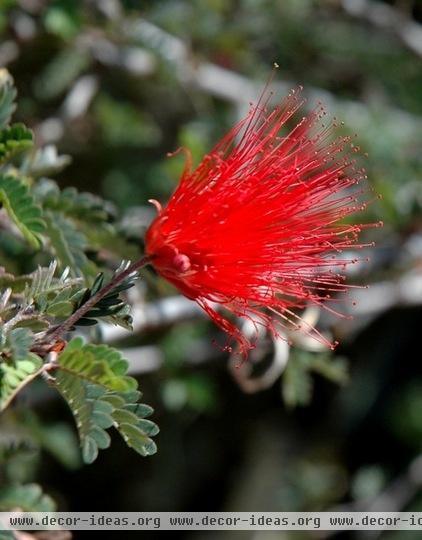
How to use it. This large shrub dresses up a bare wall with its lacy foliage and vase shape. Areas with hot, reflected sun are no problem, which makes it a great choice for western exposures and also alongside swimming pools.
Pair it with arid-adapted flowering shrubs such as brittlebush or feathery cassia, whose yellow flowers and gray foliage will vividly contrast the red puffball flowers.
For the subtler color contrast of red against purple, plant purple-flowering plants such as desert ruellia (Ruellia peninsularis) and trailing lantana (Lantana montevidensis) near Baja fairy duster.
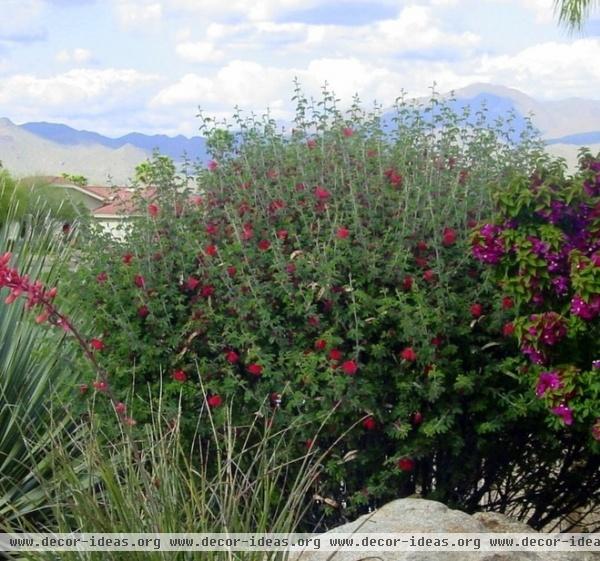
Planting notes. Plant it in well-drained soil in full or filtered sun. No fertilizer or soil amendments are required.
Pruning needs are minimal and should be concentrated on maintaining the natural vase shape. Do not remove more then 20 percent of the shrub in any year, or else flowering can be affected. In spring prune back frost-damaged branches.
See more about native gardening
Related Articles Recommended












